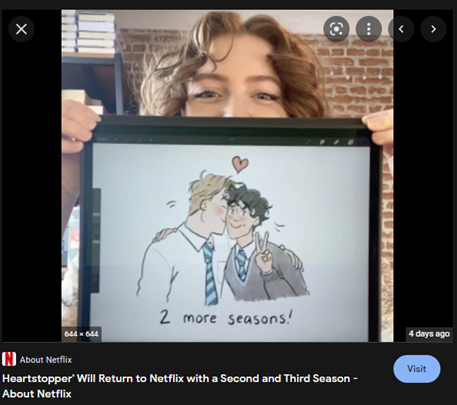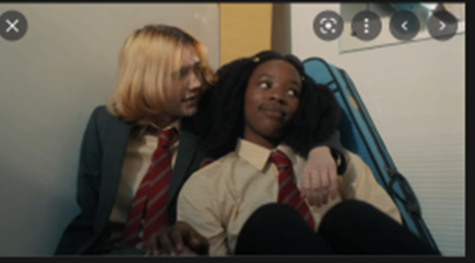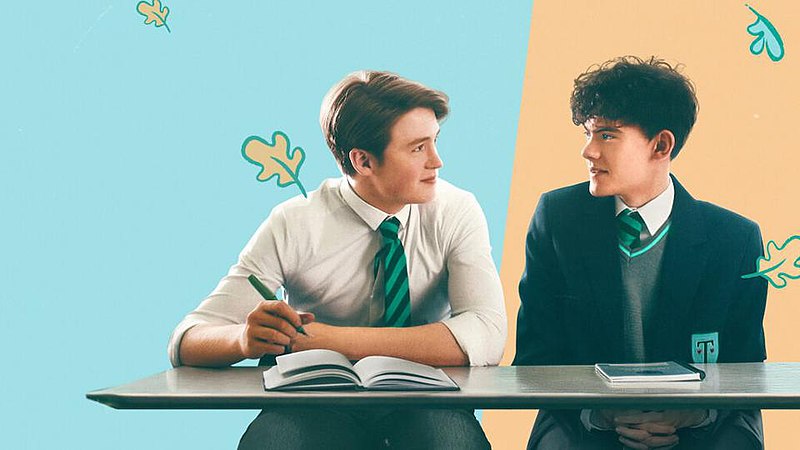“Heartstopper”: paving the way for queer joy in television.
Commentary about the importance and real-world impact Heartstopper has had on its viewers.
Netflix, CC BY 4.0
Promotional photo for “Heartstopper”

If you have been online recently, you have most likely heard of Heartstopper, a web-comic turned into a television show created by Alice Oseman. With many loyal fans, the comic became widely successful and a television series was announced in early 2021. Since its debut on Netflix in April 2022, the drama tv show has amassed a big amount of followers, with over 14,550,000 million hours watched during its first week in the streaming platform. The show also has a score of a perfect 100 in Rotten Tomatoes. It was recently renewed for a second and third season. Many people wonder why a seemingly simple show has gained so much traction after being released, and the reason is quite simple; Heartstopper is one of the few pieces of genuinely good queer representation that have made it into mainstream media.
Heartstopper follows the story of Charlie Spring and Nick Nelson, two British boys who go through highs and lows and navigate complex issues such as bullying, school, discovering your sexuality, and young love. Although it may sound cliché, boring, or non-revolutionary, this is a type of show that has never centered queer people before. It is a very innocent and almost Disney-like take on gay teen romance that most consumers of mainstream media are not accustomed to, so when it came out on Netflix, the response it got was to be expected. Within the first week, tons of video analyses, fan edits, and blog posts started coming out, no pun intended, about the show. Many people who had previously not read the web-comic started reading it, prompting the resurgence of it on platforms such as webtoon.

The show not only includes these two gay characters, however, most of its main characters are LGBT+. Darcy and Tara are a lesbian couple who also deal with the same issues Charlie and Nick face, they deal with the pressure of keeping their relationship a secret and dealing with homophobia after coming out. Elle is a trans girl who recently transferred to an all-girls school, she struggles with making friends and adjusting to a new environment after being bullied at her old school. This is another one of the reasons why this show is so special, it features a variety of different sexualities and identities that get even less representation than gay males. It is very important for every member of the community to see themselves on screen and be able to relate to their storylines.

Jaelyn Palmer, a Lafayette Junior and journalism student has a lot to say about the show. ” There has not been a ton of queer representation in mainstream media,” she says, “and when there is, queer people are usually depicted as being less than straight people. They usually never find someone because everyone else is straight and they are then portrayed as this weird, outcast, and that’s just not true in the real world. The stories are important for queer people growing up today because it is depicting it in a much more believable way. It does show some of that criticism that they will face but it ends with a more positive message of, like, be who you are and do what makes you happy.”
Jamestown High School Sophomore and performer Aida Tanglao-Aguas offered his take. ” I think Heartstopper is exactly what we needed, sexuality is never the main focus of the show and it never tokenizes the characters. The show is about discovering yourself and love, not the usual queer erasure or pain that we see. I think It’s obvious how much of a difference it makes when actual queer creators are involved in a production, it can make it so much more authentic.”
“Why has this up and coming show become so popular?” is a question many people have asked in comment sections across multiple social media platforms. The answer is quite simple: Alice Oseman’s work has been able to access a feeling that no other queer media has been able to: queer joy. Throughout the history of appearances of LGBT+ characters in mainstream media, the stories told are usually that of unrequited love, challenges faced by the community, and even death; the latter becoming a trope known as “bury your gays” by film critique channels. The trope was born out of the sadly common pattern of gay characters dying in film and tv shows. The bottom line is, LGBT+ media is rarely happy, lighthearted, and apt for any audience. Stories about the community often have a common theme, and that is suffering.

Although there have been some exceptions in recent years, even these have some sort of graphic depiction of queer torture, or they include elements that could be potentially triggering. Some mentions of recent LGBT+ shows and movies that have made it into mainstream media include Call Me by Your Name, Love Simon, Moonlight, Boy erased, and Pose. These are all amazing and show different sides of challenges the community has to overcome, but the constant pattern of having gay characters suffer for the sake of “realness” or “accuracy” gets tiring. Not every single piece of queer media has to be raw and gritty portrayal of the experiences and upbringing of LGBT+ individuals. Stories of love, adventure, exploration, and self-discovery can all be told in ways that don’t undermine our real life experience, and also give us room to dream and fantasize. My main point here is that we, as a society, are lacking stories in the queer fantasy genre.
Heartstopper is one of a kind, and it is leading the way of what, hopefully, becomes a new chapter in queer media. It shows how meaningful a story can be when actual LGBT+ creators are involved, and LGBT+ actors are given the opportunity to be on screen as a member of the community. It is amazing to see what our stories can be when given proper thought.






